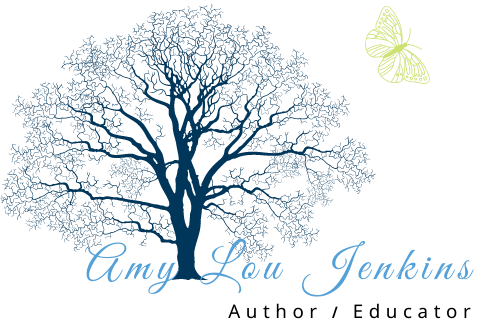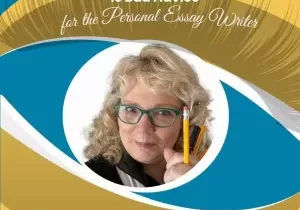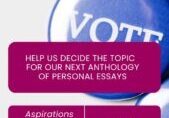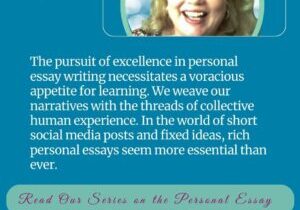Crafting Compelling Narratives: Master How to Write Personal Essays

Create meaning from experience and analysis by weaving your narratives into personal essays that resonate with readers. Let's unravel the fundamentals and a few secrets of writing and publishing personal essays.
Finding Your Voice: Embracing Authenticity in Writing
Your voice is what sets you apart from other writers and allows your readers to connect with you. Be a version of yourself. Did you ever watch those singing show competitions? You know when you hear a good singer, but they just don't stand out. Then the person comes along who sounds different. Not just good, they have an original way of delivering a song. Maybe you love or hate it, but they have an original voice. Do that.
To find your voice, start by reflecting on your own experiences and beliefs. What makes you unique? What are the values that define you? By understanding who you are and what matters to you, you can infuse your writing with authenticity. Don't be afraid to be vulnerable and share personal anecdotes or insights that resonate with you. Find your voice on the page. Beginning writing is often stilted.
Write and practice writing until you find the voce that sounds like you. Often, when we do freewriting about a topic, we don't get to the good stuff until after a few paragraphs or even a few pages. Conversely, sometimes we edit out all the good stuff, because we think we should sound authoritative and probably fake. Be an authentic version of yourself.
Who Cares? So What?
Ask yourself these questions as you review your first explorations of a subject until you find you are getting to something novel and original and it sounds like your chosen version of yourself.
Another way to embrace authenticity is by avoiding the temptation to imitate other writers. While it's natural to be inspired by others, it's important to develop your own style and approach. Experiment with different writing techniques, explore various genres, and allow yourself the freedom to express yourself in a way that feels true to who you are. Expect to write a lot of crap before you find what you really want to say. Usually, you find your path on the page rather than in you head.
The personal essayist must choose a narrator who offers readers an immersive and enriching journey. Unlike academic writing, which often prioritizes the transmission of information, personal essays seek to create an experiential connection between writer and reader. This requires more than simply recounting events; it demands the creation of a vivid and engaging narrative that transports the audience into the heart of the story. Whether assuming the persona of a snarky shopper, a thankful parent, or a lazy gardener, the essayist must breathe life into their narrator, infusing them with depth, emotion, and relatability. Through the narrator's eyes, readers are not just told about the writer's experiences; they are invited to inhabit them, to feel the joys, frustrations, and revelations as if they were their own.
This experiential approach transforms the personal essay into more than just a piece of writing; it becomes a shared journey of discovery and understanding, where writer and reader embark together on a voyage of exploration and insight. By giving readers an immersive experience, the essayist fosters a deeper connection and leaves a lasting impression that extends far beyond the page. See how it's done by reading classic personal essays.
Crafting Intriguing Beginnings: Engaging Your Readers from the Start
The beginning of a personal essay is like an invitation for readers to step into your world. It should captivate their attention from the very first sentence and compel them to keep reading.
One effective technique is starting with a compelling anecdote or scene that immediately draws readers in. Paint a vivid picture with words, allowing them to visualize the setting or experience you're describing. This will create a sense of immediacy and make readers feel like they are right there with you. Where does your essay start? Throw away the throat clearing introduction and get to the good stuff.
Will Anybody Read this or Have People Stopped Writing and Reading Personal Essays Because they are too Busy Surfing Instagram and TicKTock?
Another approach is to begin with a thought-provoking question or a bold statement that challenges conventional wisdom. This can pique readers' curiosity and make them eager to explore your perspective further. Alternatively, you can start with a powerful quote or an interesting fact that sets the tone for your essay-but this technique can be over used and therefore may fail to intrigue your reader. Say what you really think. Suzanne Britt began an essay with: "I've finally figured out the difference between neat people and sloppy people. The distinction is, as always, moral. Neat people are lazier and meaner than sloppy people."
Regardless of the approach you choose, it's important to remember that the beginning sets the stage for the rest of your essay. It should give readers a taste of what's to come and leave them wanting more. Take your time crafting this opening paragraph, as it will determine whether or not readers continue reading.
The Creative Thesis in Personal Essay Writing
In academic essays, a thesis serves as a clear statement of argument or analysis, providing a roadmap for the reader to follow. For instance, in an essay about climate change, a thesis might assert that human activity is the primary driver of global warming, guiding the subsequent discussion and evidence. Conversely, in personal essays, the thesis takes on a more subtle and artistic role. Rather than a straightforward declaration, it's often hinted at or revealed through the narrative itself. For example, in an essay recounting a transformative travel experience, the thesis might revolve around the theme of self-discovery or the power of stepping outside one's comfort zone. While not explicitly stated, this underlying thesis shapes the storytelling, offering readers a deeper understanding of the author's journey and insights. In personal essays, the thesis isn't just a point to prove; it's a subtle yet powerful force that infuses the narrative with meaning and resonance, inviting readers to explore the complexities of the human experience. In Susanne Britt's essay she did state her thesis directly: "Neat people are lazier and meaner than sloppy people."
The Art of Seamless Transitions: Connecting Moments with Meaning
A well-crafted personal essay is more than just a collection of anecdotes; it's a cohesive narrative that takes readers on a journey. To achieve this, you need to master the art of seamless transitions, connecting different moments in your essay with meaning and purpose.

One way to create smooth transitions is by using transitional phrases or words that link ideas together. These can include words like "however," "in addition," or "on the other hand." By using these transitional devices, you guide readers from one point to another without jarring them out of the narrative flow. But this beginner advice might not be needed when your essay is flowing. Read a master essayist like Barry Lopez . Follow the the unexpected and beautiful truths he puts on the page.
Another technique, you'll find this in Lopez's work, is to establish thematic connections between different sections of your essay. Look for common threads or recurring motifs that tie everything together. This could be a central theme, an emotional arc, or even a symbolic element that runs throughout your writing. His technique is to be a fascinating searcher for truth.
Lastly, pay attention to the pacing and structure of your essay. Use paragraphs and section breaks strategically to create natural pauses and shifts in focus. This will help guide readers through your narrative smoothly and ensure that each transition feels organic and purposeful.
Mastering Descriptive Language: Painting Pictures with Words
One of the hallmarks of a compelling personal essay is the ability to paint vivid pictures with words. Descriptive language allows readers to immerse themselves in your experiences and emotions, making your writing more engaging and memorable.
When describing a scene or setting, use sensory details to bring it to life. Engage all five senses – sight, sound, smell, taste, and touch – to create a multi-dimensional experience for your readers. Show them what you saw, heard, and felt in that moment.
In addition to sensory details, pay attention to the use of metaphor and simile. These literary devices can add depth and richness to your writing by drawing unexpected connections or making abstract concepts more tangible. For example, instead of simply saying you were sad, you could describe your sadness as a heavy weight pressing down on your chest.
Lastly, don't underestimate the power of precise language. Choose your words carefully to convey exactly what you mean. Avoid vague or generic descriptions and opt for specific details that evoke a strong emotional response.
Navigating Emotional Depth: Balancing Intensity and Reflection
Personal essays often delve into deep emotional territory, exploring complex feelings and experiences. Navigating this emotional depth requires striking a delicate balance between intensity and reflection.
On one hand, it's important to convey the raw emotions you experienced in a particular moment or situation. Allow yourself to be vulnerable and express those feelings authentically. However, it's equally important to provide moments of reflection or insight that give readers a deeper understanding of the significance of those emotions.
Avoid getting lost in melodrama or overwhelming readers with an onslaught of intense emotions without any context. Instead, intersperse moments of reflection throughout your essay to provide a sense of perspective and allow readers to process the emotions alongside you. Giving the reader an experience is better than telling them about yours.
Remember, emotional depth is not about wallowing in negativity or seeking sympathy. It's about exploring the complexities of the human experience and inviting readers to connect with your story on an emotional level. Read Autobiography of a Face by Lucy Greely to see how this is done.
The Power of Closure: Resonating Endings that Leave an Impact
As you reach the end of your personal essay, it's important to leave readers with a sense of closure and resonance. The ending should tie together the various threads of your narrative and leave a lasting impact on your audience.
Common advice includes encouraging you to reflect on the lessons or insights you've gained from your experiences. What have you learned? How have you grown? I think this advice sucks. Be more artful and don't end on a hunky-dory, I've-got-it-all-figured-out pontification. Really, Small insights and finding out you were wrong or even that you only know one small thing is better. For example, I once ended an essay about someone who was different from me with the thought: "All I could think to do was to be her friend." I didn't solve all the issues, and I didn't have a grand plan. Be authentic about you imperfect thoughts and actions. You don't have all the answers, so your authentic writing will include reservations and conflicts and, counterintuitively, will have more impact.
Lastly, consider ending with a powerful image or metaphor that encapsulates the essence of your essay. Have you enriched your reader? Have you been generous by respecting their time and giving them fresh language and ideas, if not, try again. Most writers will tell you that it may take more than ten drafts to hit on the one that works. Even then, it will take more iterations to improve it.
How to get your personal essay published.
You've crafted a compelling personal essay, honed your writing skills, and now you're ready to share it with the world. But how do you get your personal essay published?

Start by researching literary magazines or online platforms that accept personal essays. Look for publications that align with the themes or style of your writing. Read their submission guidelines carefully and follow them meticulously when submitting your work. Format your work as requested. Check our calls for submission for personal essays.
Consider reaching out to writing communities or attending writing workshops where you can network with other writers and gain insights into the publishing industry. Building connections and receiving feedback from fellow writers can be invaluable in your journey towards publication.
Don't be discouraged by rejection. It's a common part of the writing process, and even well-established writers face rejection regularly. Use each rejection as an opportunity to learn and improve your craft. When I began writing, I told my husband that I think I have to look at this as collecting rejections. In those days we had to send a self-addressed stamped envelope with our submission, so we paid postage on our submissions and rejections. Sometimes I sent a stamped envelope and never heard a word from them. My plan was to collect a hundred rejections, but I think I only got three before my first paid publication. I believe my first check was about $7.50.
Lastly, consider self-publishing your personal essay. With the rise of digital platforms, self-publishing has become more accessible than ever before. You can create a blog or publish your work on platforms like Medium to reach a wider audience.
Remember, getting published is not the ultimate goal of writing a personal essay (Or that's the artsy- fartsy advice we writing educators often spew.) Writing a personal essay helps you discover your best thoughts on a subject. And really if you are going to go through all the work of writing a personal essay (I mean a good personal essay), it deserves to be read.














1 thought on “Master Personal Essay Writing”